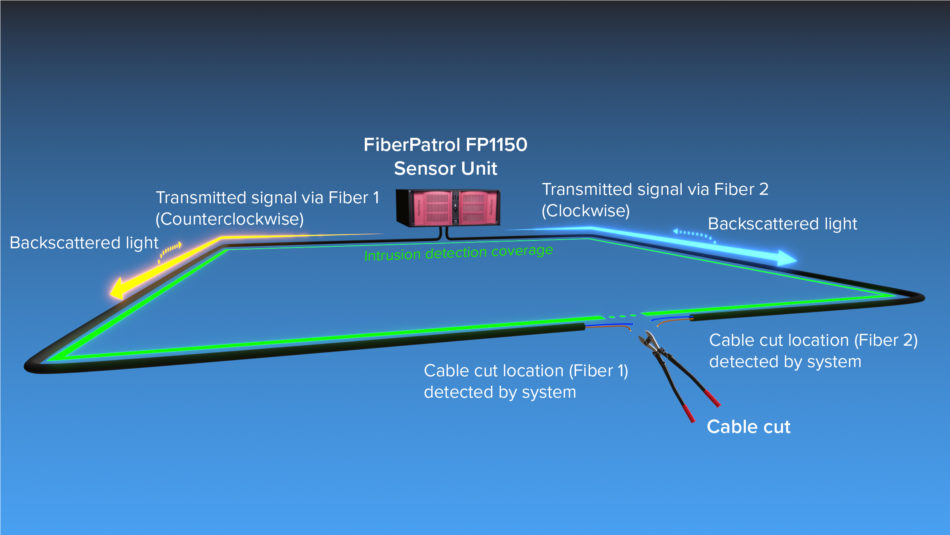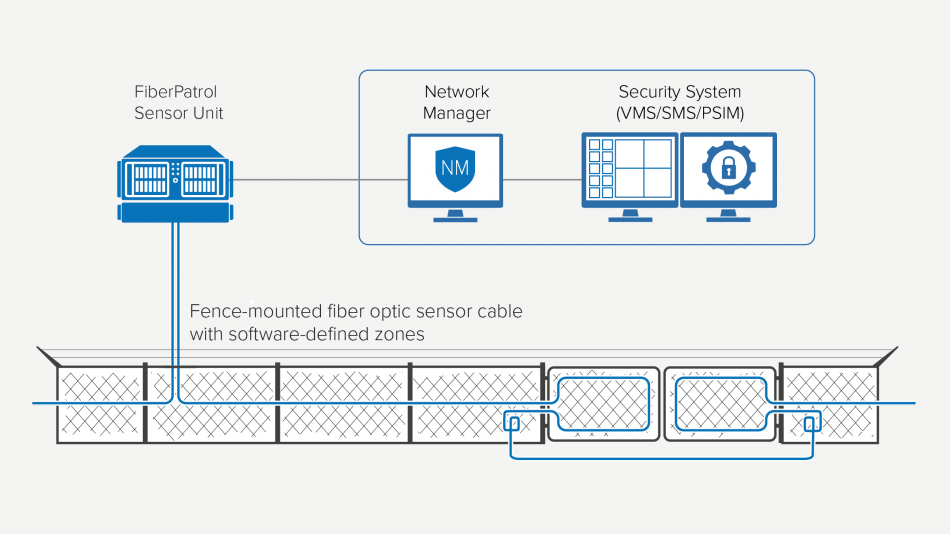Setting Up a Fiber Optics Infrastructure for Security Installations in Offices
Why Fiber Optic Protection Solutions Are the Future of Defense
The shift to fiber optic protection systems notes a substantial innovation in the realm of security, driven by their outstanding data transmission capacities and durability to outside interferences. These systems not only facilitate faster and more dependable communication however likewise present an affordable service with minimized upkeep requirements. As the landscape of safety evolves alongside emerging modern technologies such as AI and IoT, the potential for optical fiber to boost and redefine safety and security frameworks ends up being progressively noticeable. Nonetheless, the effects of these advancements increase critical inquiries about the future of safety and security measures and their efficiency in an ever-changing setting.
Benefits of Fiber Optic Solutions
One of the primary benefits of fiber optic systems is their premium data transfer capability, which helps with the transmission of huge volumes of information over lengthy ranges without significant loss. This characteristic is specifically helpful for security applications that require the continual monitoring and transfer of high-definition video feeds, sensor data, and various other important info. Optical fiber can fit the growing demands of contemporary safety and security systems, guaranteeing that data continues to be undamaged and reliable.
Furthermore, fiber optic cable televisions are much less at risk to electromagnetic disturbance, which can be a significant problem in atmospheres with various digital devices. This resistance improves the integrity of the information being transmitted, therefore reducing the danger of information breaches or system failures. Moreover, fiber optic systems are inherently extra secure than typical copper cable televisions, as using a fiber optic line without detection is exceptionally tough.
The longevity of fiber optic cords additionally adds to their appeal. They are immune to environmental aspects such as moisture and temperature level changes, minimizing upkeep prices and increasing system durability. On the whole, these advantages position fiber optic systems as a robust and effective choice for contemporary safety facilities, making sure reputable and protected information transmission.
Improved Information Transmission Speed

The capability to transfer huge amounts of data rapidly promotes the seamless integration of high-definition video feeds and progressed analytics. Protection systems can currently refine and assess details in real-time, boosting action times and situational recognition. In addition, fiber optic links support longer transmission distances without deterioration of signal high quality, making them optimal for extensive safety networks.
The increased rate of fiber optic systems not just boosts the effectiveness of security operations yet also reduces latency. This is particularly essential in crucial situations where timely decision-making can prevent protection violations or alleviate potential hazards. As companies remain to focus on safety and efficiency, the need for rapid and reputable data transmission will unquestionably strengthen navigate to these guys fiber optic systems as a cornerstone of modern-day safety facilities.
Resistance to Disturbance
Fiber optic safety systems constantly show remarkable resistance to electromagnetic disturbance, an important benefit in atmospheres susceptible to digital sound. Unlike conventional copper wires, which can be adversely impacted by electromagnetic fields, radio frequency disturbance, and various other forms of electrical disruption, fiber optic cable televisions utilize light to transmit information. This integral property makes sure that the signals remain clear and unaltered, despite surrounding digital task.
Making use of glass or plastic fibers in fiber optic innovation creates an obstacle versus interference, enabling trusted information transmission even in tough situations such as industrial centers, urban locations with high electronic website traffic, or locations near radio towers. This characteristic substantially reduces the chance of signal destruction or loss, making fiber optic systems particularly appropriate for security applications where integrity and precision of information are paramount.
Furthermore, this resistance to disturbance boosts the overall performance and dependability of safety systems, guaranteeing that monitoring and alert systems work effortlessly. In a world where protection is increasingly threatened by innovative technologies, the durability of fiber optic systems attracts attention as an essential attribute, reinforcing their status as an important element of contemporary security framework.
Cost-Effectiveness With Time
Substantial cost financial savings can be attained over time with the implementation of fiber optic protection systems. While the first financial investment might seem higher compared to standard copper-based systems, the long-term financial benefits end up being noticeable via reduced functional and upkeep expenses (fiber security). Fiber optic cords are naturally more durable and much less vulnerable to ecological aspects, which translates to reduce substitute and repair expenditures over their lifespan
In addition, fiber optic systems need much less power to run, which even more reduces power expenses. Improved information transmission capacities allow for less repeaters and amplifiers, reducing tools financial investment and simplifying installation processes. The scalability of these systems likewise adds to cost-effectiveness, as organizations can increase their protection facilities without sustaining significant added costs.
An additional aspect to think about is the increased effectiveness in surveillance and action capabilities that fiber optics offer. Improved real-time information transmission can bring about quicker occurrence action times, possibly mitigating losses and liabilities connected with safety violations. Altogether, the long-lasting advantages of fiber optic protection systems not only justify the initial expense but also position them as a monetarily sensible option for organizations looking for durable protection solutions.

Future Developments in Safety
Progressing technologies are established to reinvent safety and security systems, integrating expert system (AI) and device understanding to enhance threat detection and action capacities. These advancements will certainly allow protection systems to analyze vast amounts of data in real-time, determining patterns and abnormalities that show possible hazards. This positive strategy will certainly make it possible for much faster decision-making and much more efficient case responses.
Additionally, the consolidation of the Web of Points (IoT) is leading the way more information for interconnected security devices, using detailed security and tracking. Smart sensors can communicate info regarding environmental changes, while automated notifies can notify safety and security workers quickly of suspicious tasks.
In addition, the evolution of biometric technologies will certainly additionally boost protection devices. Facial acknowledgment, click site finger print scanning, and retina recognition are becoming more innovative, giving layers of authentication that are difficult to bypass.
Verdict
Finally, fiber optic safety systems represent a significant innovation in security technology, supplying unparalleled data transmission rate, resistance to electromagnetic disturbance, and long-lasting cost-effectiveness. As the demand for sophisticated protection solutions remains to expand, the combination of fiber optics with arising modern technologies such as AI, IoT, and biometrics will certainly further improve safety infrastructures (fiber security). The combination of these innovations will make sure a more secure and receptive atmosphere, strengthening fiber optics as a keystone of future safety systems